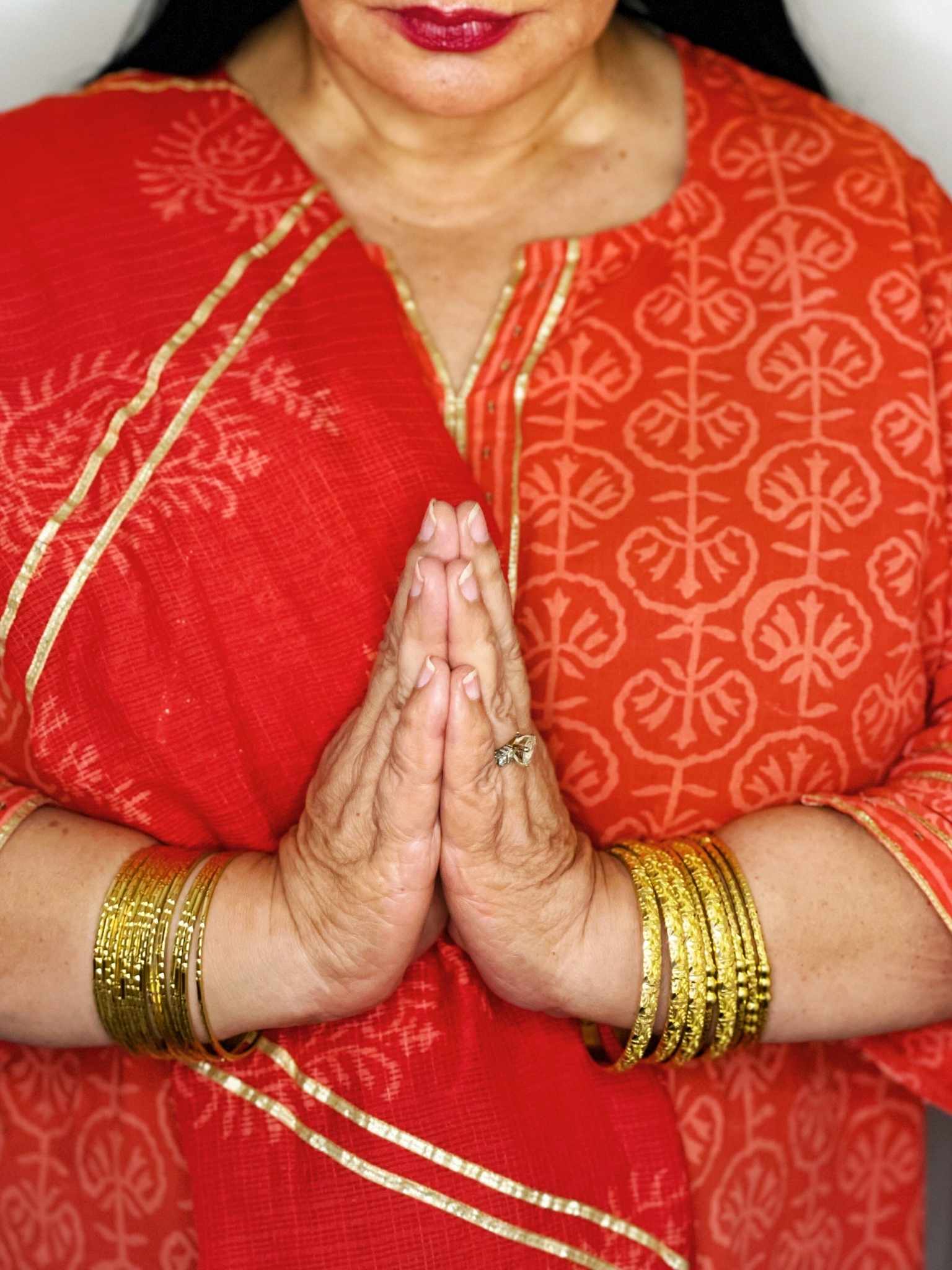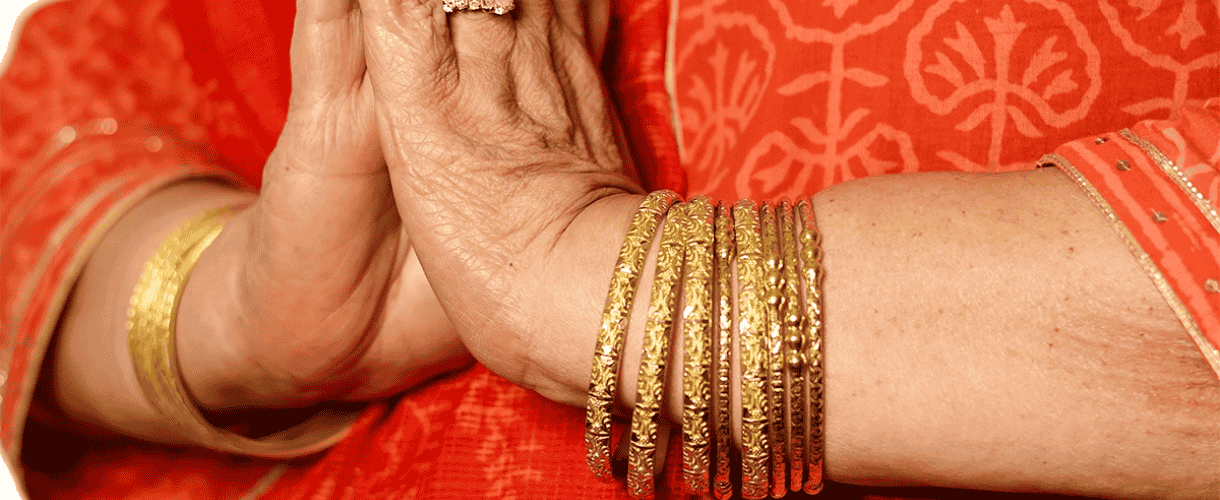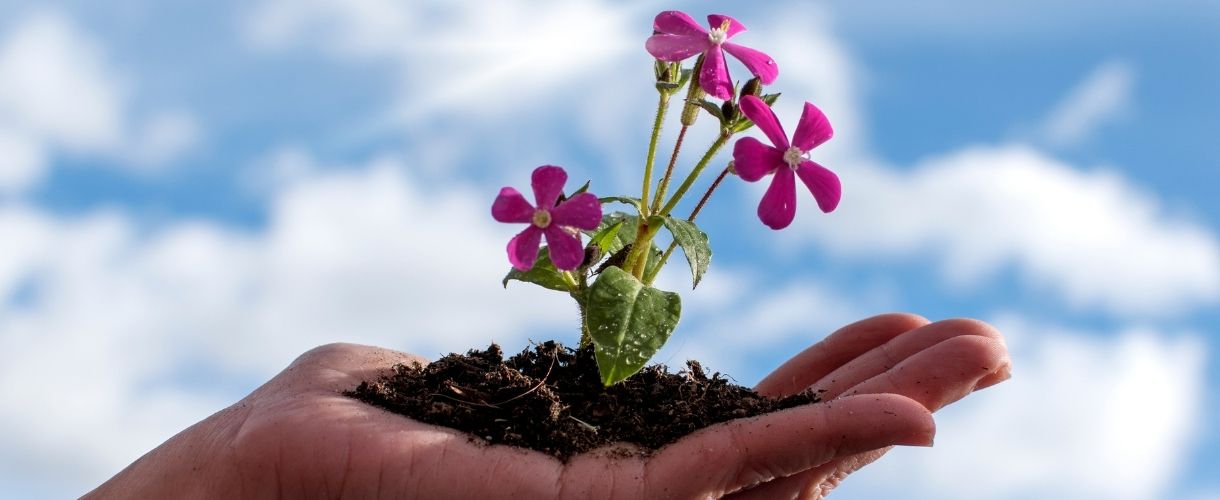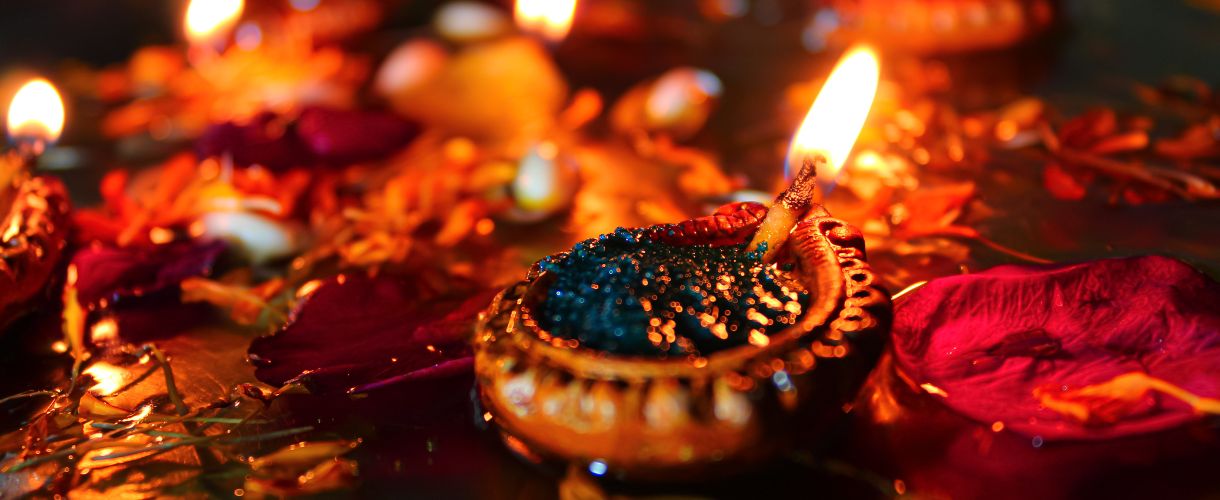
DIWALI: The Festival of Lights
November 4, 2024
Navigating the Transition from Student to Teacher
December 24, 2024Namaste
Namaste, sometimes called namaskar and namaskaram, is a customary, respectful form of Yogic greeting, honouring a person, group, substance or anything, and can be used at any time of day. It is usually accompanied by a slight bow with both hands pressed together at the chest, palms touching and fingers pointing upwards, thumbs closest to the heart.

Anjali Mudra
The gesture of placing the hands together, doing namaste, is called Anjali Mudra, a posture where both palms are placed together in a reverential gesture, to pray before a deity, receive any person one reveres and also to greet friends. In addition to being the gesture for namaste, this mudra is one of the postures found in Indian classical dance, Bharatanatyam, in Sanskrit classical texts of the dance, Natya Shastra (200 BCE – 200 CE) and in yoga practice (for example, a standing posture (asana) incorporating it is pranamasana. in sun salutation, surya namaskara).
Anjali mudra differs from namaste by being a non-verbal gesture, while namaste can be said with or without any gesture. Anjali mudra and Namaskara mudra are very similar but have a subtle difference. The back of the thumbs in Anjali mudra face the chest and are perpendicular to the other fingers, while the thumbs in Namaskara mudra are aligned with the other fingers. The Natya Shastra further states that for prayers inside a temple, Anjali mudra should be positioned near one’s head or above, while meeting someone venerable it is placed in front of one’s face or chin, and for friends near one’s chest.
Anjali mudra gesture is widely used throughout the Indian subcontinent, parts of Asia and beyond, where people of South and Southeast Asian origins have migrated to. Here, Namaste is used as a respectful form of greeting, acknowledging and welcoming a relative, guest or stranger. In some contexts, namaste is used by one person to express gratitude for assistance offered or given, and to thank the other person for his or her generous kindness.
Etymology and History
Namaste is derived from Sanskrit. It is a combination of Namas, reverential worship + te, to you.
Since namaste is a non-contact form of greeting, some world leaders adopted the gesture as an alternative to hand shaking during the Coronavirus pandemic as a means to prevent the spread of the virus, and it has entered the English language and become a perfect pandemic, no-touch greeting, in our contemporary era.
Namaḥ means ‘bow’, ‘obeisance’, ‘reverential salutation’ or ‘adoration’
and te means ‘to you’ (singular dative case of ‘tvam’).
Therefore, namaste literally means “bowing to you”.
It is found in the Vedic literature, as far back as the Rig Veda, and the post-Vedic texts, such as the Mahabharata, and in numerous other instances in many early Hindu texts.
Excavations in various Indus Valley and Harappan Civilisation sites have revealed some male and female terracotta figures in namaste posture.
It is also widely found in numerous ancient and medieval era sculpture and mandapa relief artwork in Hindu temples. It is widely found in Indian temple reliefs and sculpture in mandapam, at entrances and in iconography such as the Lingobhavamurti of Shaivism.
Namaskara is one of the 16 veneration practices (upacharas ) used inside temples or in any place of formal worship (puja). In the context of deity worship, it has the same function as greeting a guest or anyone else. It expresses politeness, courtesy, honour, and hospitality from one person to another. It is used for goodbyes as well. This is sometimes expressed, in ancient Hindu scriptures as ‘treat the guest like a god’ ( Atithi Devo Bhava).
Namaste is one of the six forms of prostration, pranama, (ashtanga, sashtanga, panchanga, dandavats, namaskar, and abhinanda) and in parts of India these terms are used synonymously. It is an old form of Hindi greeting which is used to greet elders, including the pranam by touching their feet.

Yoga Mind: Namaste
Namaste captivates yoga’s spiritual import reflecting the belief that “the divine self (atman) is same in you and me”, and connotes “I bow to the divine in you” or “the sacred in me recognises the sacred in you”.
To know yourself as poor, only because someone else is rich, as strong, only because someone else is weak, as a white person, only because someone else is a person of colour, as a man, only by dominating women, as a saint, only because someone else is going to hell… are ways which reinforce a competitive knowing of oneself. Here identity is dependent upon comparison, which gives rise to a perpetual competition of contrasts, of winners and losers. Here wealth, strength, masculinity, sainthood etc.are devoid of content.
However, if you are able to see yourself in other people, your experience in the world will inevitably be a richer, kinder, more connected one. This is namaste.
‘Namaste’ offers an alternative way of discovering self-identity, through interdependence.
To look at another and see yourself reflected back, will inevitably prompt you to treat people better.
Do not confuse ‘Namaste’ with kindness. Kindness is something we might try to show more of, but namaste is much deeper. It recognises the inner worth of every human being, starting with yourself. It affirms that who we are is only who we are thanks to other people. Sure, you have your parents to credit for bringing you into the world, but beyond this there have been hundreds, perhaps thousands of relationships, big and small, along the way, which have taught you something about life and how to live it well. Your parents or guardians have taught you how to walk and talk. Your teachers at school taught you how to read and write. A mentor may have helped you find fulfilling work. A lover may have taught you emotional lessons, both good and bad - you have learnt from all experiences. Every interaction you have had has brought you to where you are today.
Namaste is a difficult worldview for those people who tend to understand self as being over and against others, or as being in competition with others.
From a certain worldview, interdependence may easily be confused with codependence, a pathological condition in which people share a dependence on something that is not life-giving, such as alcohol or drugs. Namaste, however, is about symbiotic and cooperative relationships…neither the parasitic or destructive relationships of codependency, nor the draining and alienating relationships of competition.
When you greet someone, with your palms together, prayerfully, you make yourself open and available to the other person, affirming them. You do not feel threatened if the other person were capable and skilled, because you have a genuine self-assurance that comes from knowing that you belong to a greater whole and that you are diminished when others are humiliated or diminished.
There is still a strong ‘survival of the fittest’ mentality prevalent oin the world today. But so much has changed, and our planet cannot survive if we define our identity only through competition. Instead of reinforcing competitive ways of knowing oneself, Namaste offers a way of discovering self-identity through interdependence. As such, it is possible to argue that your very salvation is dependent upon mine—radical stuff for non-yogic ears to hear, yet vital to the survival of the earth.






